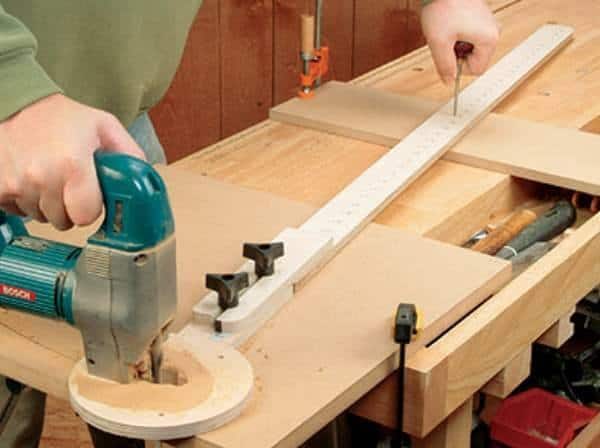10 Tips to Make Accurate Cuts Using Wood Routers
Wood routers have become quite popular over the years. Most woodworkers are getting excellent results through the use of these tools. However, there are those who seem not to get clean cuts irrespective of the type of router they use. This is mainly as a result of not being able to use the router properly. We have put together some tips that will help you in attaining quality cuts.
10 Awesome Accurate Router Cuts Tips
Router Bits:
If possible, you should always use routers that have ½ inch shank bits. Most of the modern routers will have both the 1/2 and ¼ inch collets. The half inch shank bits provide more stability than the 1/4” shanks and they will generate better and clean cuts on your wood.
Bit Installation:
Use the user manual to ensure that you have the bits installed properly. Insert the bit all the way to the bottom until it protrudes out. Once it is in that position, back it up to about 1/8 or 1/16 of an inch and tightens your collet. This ensures that the bit is in full contact with the entire shank and prevents any chance of becoming loose or falling out during the operation.
Sharpen and Clean Bits:
Do not use bits that are not clean or blunt. This will cause the router to produce poor cuts. When you do not clean your bits, the resin will build up leading to overheating and dull cutting. You can use resin remover products to clean your bits after use. Use sharpeners that are diamond-coated to exceptional results.
Control Bit Speed:
You should be fully aware of the speeds that your router can spin at. Routers do not have uniformed speed, with larger ones speeding at higher speeds and creating a bigger vibration than the small ones. A simple tip to remember is that if a router has a larger bit, it will have slower rotations. Most manufacturers will clearly indicate the speeds that the router can do, which should be followed religiously.
Clear Waste Materials:
Do not allow chips to accumulate on your router as this will affect the quality of the cuts. Use the dust collection system to remove these chips between the work surface and the router plate.
Start with Light Passes:
When you are using bit profiles that are required to remove high volumes of chips, you should run light passes. You should not assume that routers are meant to make cuts all at once. Making several passes that are light will give your bits a longer lifespan.
Watch the Feed Rate:
This refers to the speed at which the bit is passed on the edge of the material. You should closely monitor this rate and ensure you run it right. Slow speeds may burnish the edges while extremely fast rates may result in rough cuts. Practice with other materials until you master the correct feed rate before routing your final product.
Secure the Work Piece:
This applies to the handheld routers, which are run over the piece being worked on. You should ensure that it is held intact and does not shift during routing. Use clamps to hold it in place so that you will have a consistent cut that is smooth.
Right Direction to Route:
The handheld routers spin clockwise and at high speeds. For excellent results, you should safely move the router in the anticlockwise direction when routing the outer edges. When you are routing the inner frame, move the router clockwise so as to control the rotation of the bit to your advantage.
Routing Profile Edges:
You should discern the right order to rout when you are cutting the end edges. You should also attach a backer board to the wood surface so as to ensure that there are no tear-outs during the cutting process.
These simple tips will certainly help you to get clean cuts for your woodwork projects. Always observe the safety instructions provided by the manufacturer when using your router.

